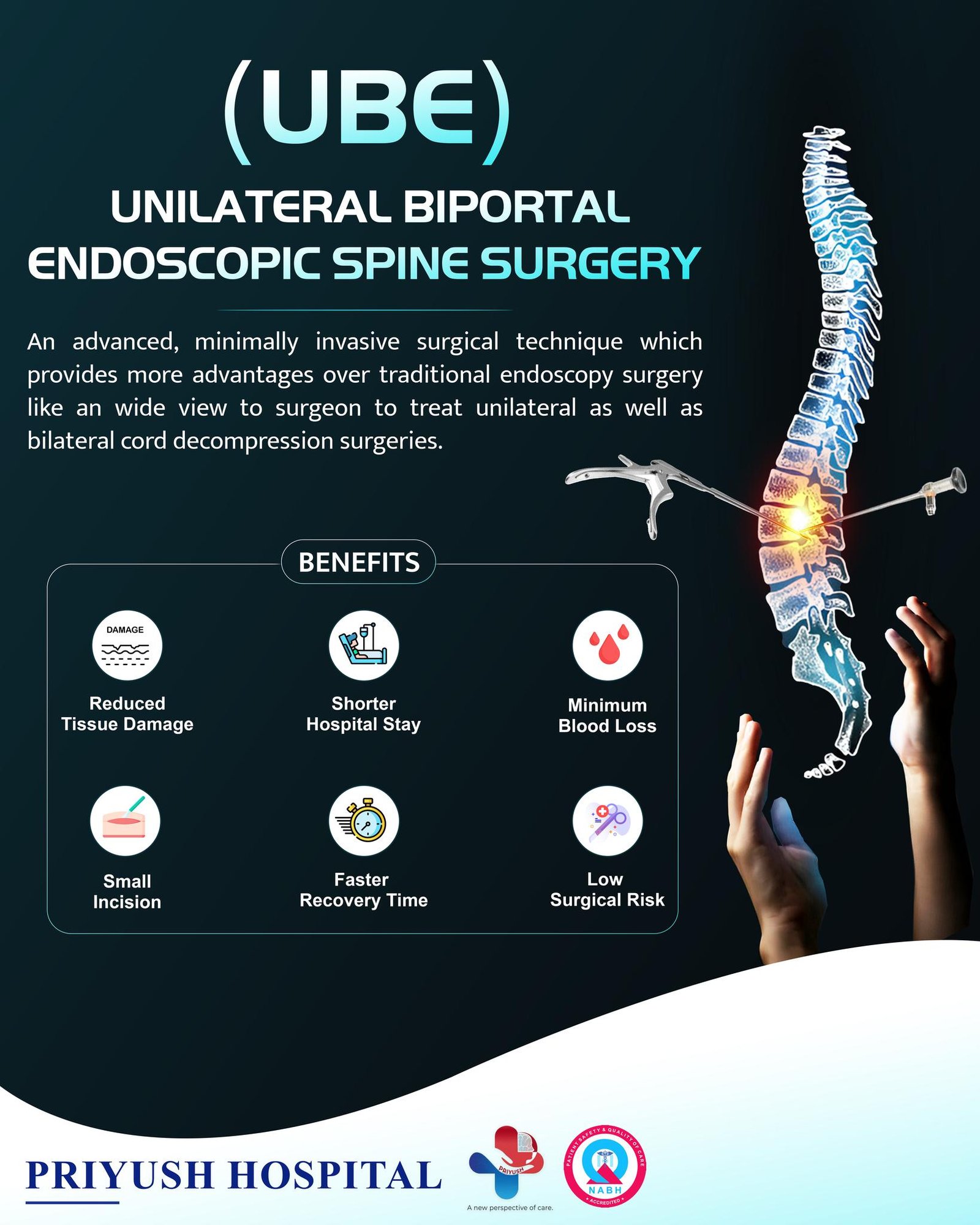What is UBE (Unilateral Biportal Endoscopic )
Unilateral Biportal Endoscopic (UBE) Spine Surgery has gained popularity as a minimally invasive technique for treating various spinal conditions. It joins parts of both percutaneous endoscopic spinal medical procedure, which uses endoscopic tools, and microscopic spinal medical procedure, which utilizes a floating technique. UBE is especially powerful for unilateral or bilateral decompression decompression in cases of spinal waterway stenosis, foraminal stenosis, solidification of the ligamentum flavum, low-grade spondylolisthesis and nearby portion degeneration.
Compared with conventional spine medical procedures, UBE offers a few benefits, including reduced tissue harm and damage, minimal blood loss, more limited clinic stays, and faster recuperation times. Patients additionally will experience quite less postoperative pain, require less analgesics, and return to their normal activities sooner. Early clinical results have been promising, in spite of the fact that there is a risk of complications, for example, dura tears, nerve foothold wounds, and postoperative hematomas.
Key stages in the UBE technique include proper patient positioning, precise portal creation, clear endoscopic representation, powerful decompression and if necessary, spinal combination. This overview will focus on these essential surgical techniques and strategies to minimize complications.
Benefits of UBE:

